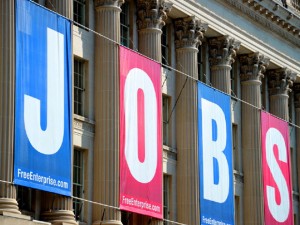The dog days of summer are over and now it’s back to normal. The kids are back to school; you can always tell because the traffic is bigger mess than usual driving to and from work. The distractions that come along with summer will be in the review mirror and reality will soon hit us in the face like a cold glass of water.
For many who have tuned out over the last few months there’s a significant election taking place today in Quebec and depending on the results we could all end up feeling the aftershocks. If the polls are correct the Parti Québécois, led by Pauline Marois, could control the leavers of power. Just like the movie Groundhog Day, we’ve all seen this before. Ms. Marois has made it clear that if her party is successful their demands will be clearly articulated in short order, with the ultimate objective being sovereignty. Could this mean another referendum in Quebec? Possibly. Even if a referendum does not come to pass the mere threat of one will have an impact on the economy. Canada is viewed as safe haven to invest and one of the main reasons for that is our political stability. A referendum debate is a sure fire way to shake investor confidence.
Another election looming is in B.C. The Provincial Liberals are being savaged in the polls. Caucus members are fleeing for the exits with such speed that Usain Bolt would have to take notice. Premier Christie Clark is taking much of the heat for the exodus and for the state of her party. I find it interesting that B.C. has been the envy for many in our country, yet locals have grown restless. Change is in the air and the polls indicate the NDP will once again rule. I actually resided in Vancouver when the NDP were last in power, I can honestly say my memory of them has faded somewhat. What I do remember is that the leaders of that party were either convicted of a crime or came under RCMP investigation. The past has a way of repeating itself, and if it does in B.C., hello headlines and uncertainty.
Here in Ontario the Premier is talking tough and taking to all the special interest groups that the Liberals have catered too to get elected. Massive debt, unemployment levels higher than the national average are at the forefront for Ontario. The question for the Provincial Liberal is how long will their cousins to the left prop them up. As usual in politics the polls will determine when the Liberals fall, meaning yet another election in Ontario. So, there’s political uncertainty in Quebec, BC and Ontario. Three key provinces will be in the news with regularity. Like or not we’ll have no choice but to pay attention. Summer is over and the political silly season is about to commence. Depending what happens we could all be in for a bumpy ride.
Until next time,
Cheers.
Read More Add a Comment
 Nice to see another topic making headlines rather than the same old evil which threatens to bring down the Canadian economy, mortgages. The topic dejour today is the strength of the Canadian one dollar coin. There’s a fair bit of hand wringing over the fact the Canadian dollar is today is worth $1.01 U.S. Individuals who pull the leavers of power in this country often remind us that a strong Canadian dollar negatively impacts our economy. Interesting position to take when one considers the reason why investors are flocking to the Canadian dollar. Factors like, government debt which is manageable, stable employment numbers and a sound banking system. Oh yeah, and free market economy.
Nice to see another topic making headlines rather than the same old evil which threatens to bring down the Canadian economy, mortgages. The topic dejour today is the strength of the Canadian one dollar coin. There’s a fair bit of hand wringing over the fact the Canadian dollar is today is worth $1.01 U.S. Individuals who pull the leavers of power in this country often remind us that a strong Canadian dollar negatively impacts our economy. Interesting position to take when one considers the reason why investors are flocking to the Canadian dollar. Factors like, government debt which is manageable, stable employment numbers and a sound banking system. Oh yeah, and free market economy.
There are those who are suggesting the Bank of Canada should intervene by easing monetary policy by lowering the overnight lending rate. Those who work in the mortgage industry know that will not happen for a while. There has to be clear evidence that housing market has cooled before the Bank of Canada would consider lowering the overnight rate. Besides, it’s estimated that if the Bank of Canada was to lower the overnight lending rate to zero, the net effect would be the Canadian dollar would be worth 98 cents U.S.
Given that the Canadian dollar will remain strong for the foreseeable future the press and government should turn their attention to a far more pressing issue, like our productivity. Canada spends approximately 1 per cent of GDP on research and development. That is approximately half of what the U.S. spends. The gap in productivity between our two countries is widening, and if we were on par with U.S. productivity the strength of the Canadian dollar would not be as worrisome.
Innovation drives productivity. Every industry will have to make significant investments in research and development if we want to compete with the giants. It’s not just about doing things faster and cheaper. We will have to compete on value, service and produce products which are unique. What drives productivity is a skilled workforce and this is an issue we all have to deal with. We now have to compete in a global economy which is knowledge based. Fundamental structural change is required in Canada if we all want to maintain our standard of living in the future. Government and industries both play a key role in this debate. It’s time to actually have one.
Until next time,
Cheers.
Read More Add a Comment
 Oh sure, we’re winning a few medals in London but the Olympics are fleeting. Before you know it the Olympics will be over and we can all go back to watching our favorite programs on T.V. Don’t get me wrong, we’re proud of our athletes but there something bigger happening which has brought our great nation together. Drinking beer!
Oh sure, we’re winning a few medals in London but the Olympics are fleeting. Before you know it the Olympics will be over and we can all go back to watching our favorite programs on T.V. Don’t get me wrong, we’re proud of our athletes but there something bigger happening which has brought our great nation together. Drinking beer!
Try as I might but I had difficulty finding a good news story about a company doing really well with a connection to Canada, until I came across this gem in the National Post. No one, and I do mean no one can convince me that we as Canadians didn’t play a part in the success of this company. It’s summer time in Canada, and it’s what we do. Just remember the next time you twist off the cap on a bottle of beer you might want to think of buying some stock. Like Pavlov’s dog.
Until next time
Cheers.
Molson Coors Brewing Co reported quarterly profit that blew past Wall Street estimates on Tuesday, helped by an improved performance in its U.S. business and the addition of operations in Europe.
The maker of Molson Canadian, Coors Light and Blue Moon beers reported net income of US$105.1 million, or 57 cents per share, in the second quarter, down from US$222.8 million, or US$1.18 per share, a year earlier. Excluding one-time items, including financing and acquisition-related charges, earnings were US$1.38 per share. On that basis, analysts, on average, were expecting US$1.19 a share, according to Thomson Reuters I/B/E/S. The company acquired East European brewer StarBev in June in a US$3.4 billion deal that expands its presence outside of its three core markets of Britain, Canada and the United States. Net sales were US$999.4 million, higher than US$933.6 million a year earlier and analysts’ estimate of US$934.8 million. The company sold 13.9 million hectoliters of beer, a 6.4% increase from the prior year.
Earlier Tuesday, MillerCoors – the combined U.S. operations of Molson Coors and SABMiller – posted a 9.1% rise in net income, driven by price increases, a move toward more expensive beers and continued cost savings.
© Thomson Reuters 2012
Read More Add a CommentReally? Everything I’ve been reading indicates that the condo market in Toronto and Vancouver was going to play a key role in the Canadian housing bust.”
Ever look a painting and say to yourself “it looks like something my six year old painted in art class”. That’s the thing about art – it’s all in the eye of the beholder. One person’s interpretation can be radically different than someone else’s. That’s perfectly acceptable when it comes to art. Art is about taste. We all know that data can be manipulated to make a point but it’s fascinating how simple raw data can paint completely different pictures. And is there any room for taste when analyzing data? I was stuck by a story in the Financial Post this morning, the headline read; ”Toronto not in condo bubble: RBC”
Really? Everything I’ve been reading indicates that the condo market in Toronto and Vancouver was going to play a key role in the Canadian housing bust. Surely this article is based off the same data that Robert Hogue, RBC’s senior economist, used for his most recent report. According to Mr. Hogue, “Toronto’s condo building frenzy over the last few years is mainly a response to the steep drop in new single-family homes being built. Efforts by the Ontario government to stem urban sprawl in the GTA is one of the reasons why developers are being forced to build laterally, said Mr. Hogue. To accommodate the 38,000 or so net new households it sees every year, the GTA must increasingly expand its housing stock ‘vertically’”.
Hang on a second, Mr. Hogue is the only economist to factor in that 38,000 new households are required to meet Toronto’s needs, and that the Ontario government is making it difficult for builders of single family homes outside of the GTA? Kudos to Mr. Hogue and RBC for discovering that super-secret bit of information. Let’s see what other nuggets Mr. Hogue came up with, like investors buying up condo’s with the sole purpose of flipping the property. “Their involvement has not inflated overall housing demand beyond household formation and may contribute only to a modest overshoot in the coming years if demographics weaken”. Well, what are we supposed to think now? I say that with tongue firmly planted in cheek.
For transparency purposes, Mr. Hogue did sound an alarm bell, “if investors overwhelmingly buy single-bedroom units, for instance, it could skew demand and result in a bubble.” Let’s also not forget that if aliens land and suck the brains out of every builder and then program them to build one bedroom units only, that too could contribute to a bubble. I think we have it all covered now. The fact is that facts are interpreted differently. One analysts’ “slight overshoot” is another’s “Armageddon”. For debating purposes that’s okay, for making public policy, not so much.
To read the full story in the National Post, please click here.
Until next time,
Cheers.
Read More Add a CommentNot long ago CAAMP’s Chief Economists, Will Dunning, said to me that economists base their forecasts on their personality.

All of us at some point have said, “I can’t believe what I just saw”. One example is if the Toronto Maple Leafs ever win the Stanley Cup. The conscious mind would not to be able to accept something so outrageous and beyond the realm of possibility. It is so much easier to believe in something that you never see – like all things religious. Religion is purely based on faith and actual scientific evidence is, well, scarce to say the least. Yet, people believe. So how is it that something as simple as economic data makes some economists disbelievers? That’s exactly what’s happening today; they see the data but they don’t believe it.
I find it fascinating that economists are saying Canada’s job creation numbers should not be taken at face value. Over the last two months, Canada has added more jobs than in any other two-month period in the last 31 years, with approximately 140,500 jobs added in March and April. Also, more full time permanent positions were added, meaning more Canadian workers will benefit from employer healthcare benefits. That’s fantastic news! It’s reason to celebrate! But no, economists are suggesting the employment numbers are not sustainable and our job numbers are uneven. As for sustainability, no kidding! But I guess if they say that often enough they’ll eventually be right. As for the numbers being uneven – Alberta, for example, has the hottest job market today, while Ontario lags behind the rest of the country – that’s another debate all together. Ontario’s most recent numbers are clear evidence that the province needs real leadership. What was once the economic engine of Canada has now been reduced to the nation’s punch line. Ontario aside, there’s great news for the rest of the country. Quebec? Everyone was under the impression that the province was headed for another recession. Low and behold, the job numbers in Quebec are rising. Companies are looking for experienced workers – evident in the fact that more people aged 55 and older are being hired. Youth unemployment is still an issue, and Canada’s jobless rate ticked up a bit to 7.3%. That being said, Obama would kill for those numbers heading into the presidential elections.
Canada’s job figures appear to have caught many economists by surprise. The question is why? How can those in “the know” now claim that these numbers came out of nowhere. Of course, they can make that claim, but if they continue to get caught off-guard, their future predictions will fall on deaf ears.
Not long ago CAAMP’s Chief Economists, Will Dunning, said to me that economists base their forecasts on their personality. They’re either optimists or pessimists, and their forecasts will reflect their normal disposition. Based on their recent track record, maybe there should be a third category –Illusionist.
Until next time.
Cheers